Beyerdynamic Amiron – Gifted In Music
Beyerdynamic released a very interesting headphone, which we felt would have needed more recognition. We’re talking about their Beyerdynamic Amiron, a Desktop, Open-Back headphone made for those who really love their music.
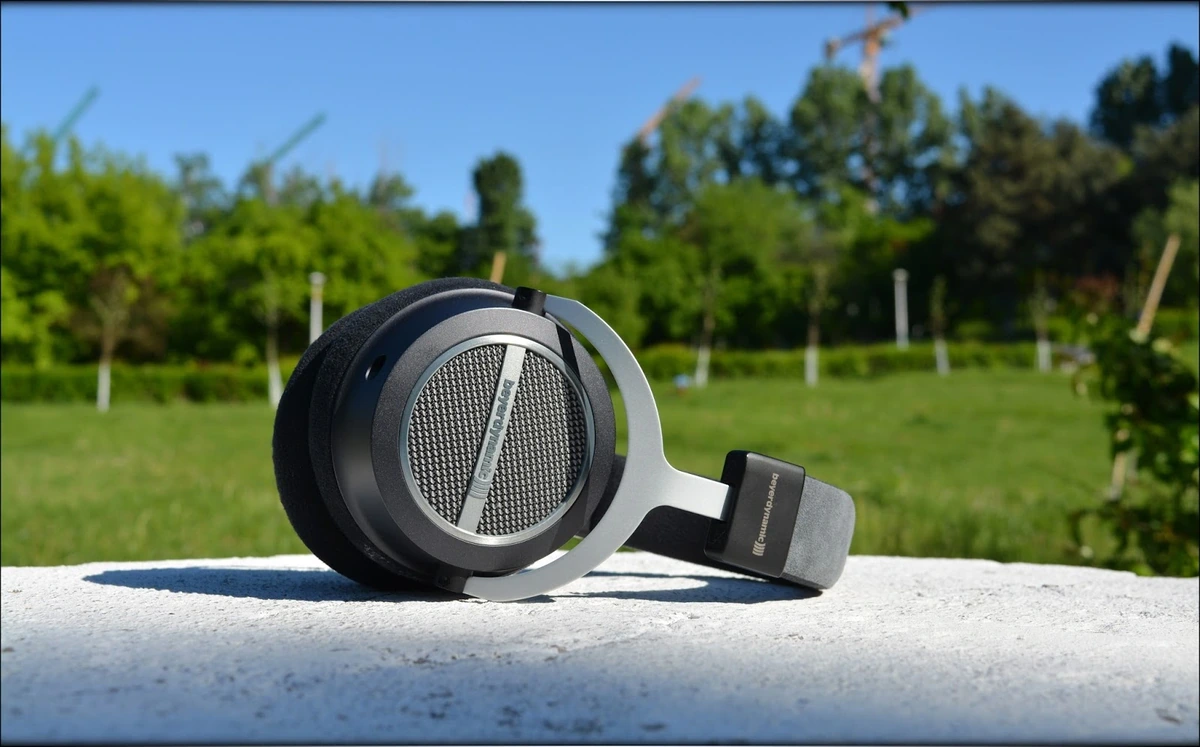
Introduction
We are honored to review such an awesome headphone from a large and reliable company like Beyerdynamic. Most music lovers probably heard about Beyerdynamic before, but to refresh your memory, they are one of the oldest and most reliable companies working on audio-related technology, from headphones, all the way to Microphones, In-Ear Monitors and everything in between. We reviewed Beyerdynamic Xelento before, which were an amazing IEM for the music lover, but today we’re looking at something a little different, the first headphone we are reviewing from Beyerdynamic.
It should be noted that I have absolutely no affiliation with Beyerdynamic, I am not receiving any incentive for this review or to sweeten things out. This review is not sponsored nor has been paid for by Beyerdynamic or anyone else. I’d like to thank Beyerdynamic for providing the sample for this review. The sample was provided along with Beyerdynamic’s request for an honest and unbiased review. This review will be as objective as it is humanly possible, and it reflects my personal experience with Beyerdynamic Amiron. Every opinion expressed is mine and I stand by it, the purpose of this review is to help those interested in Beyerdynamic Amiron find their next music companion.
Product Link
You can get Beyerdynamic Amiron from www.amazon.com here: https://www.amazon.com/beyerdynamic-Amiron-Wireless-High-End-Headphone/dp/B079P4348N/
Packaging
First things first let’s get the packaging out of the way:
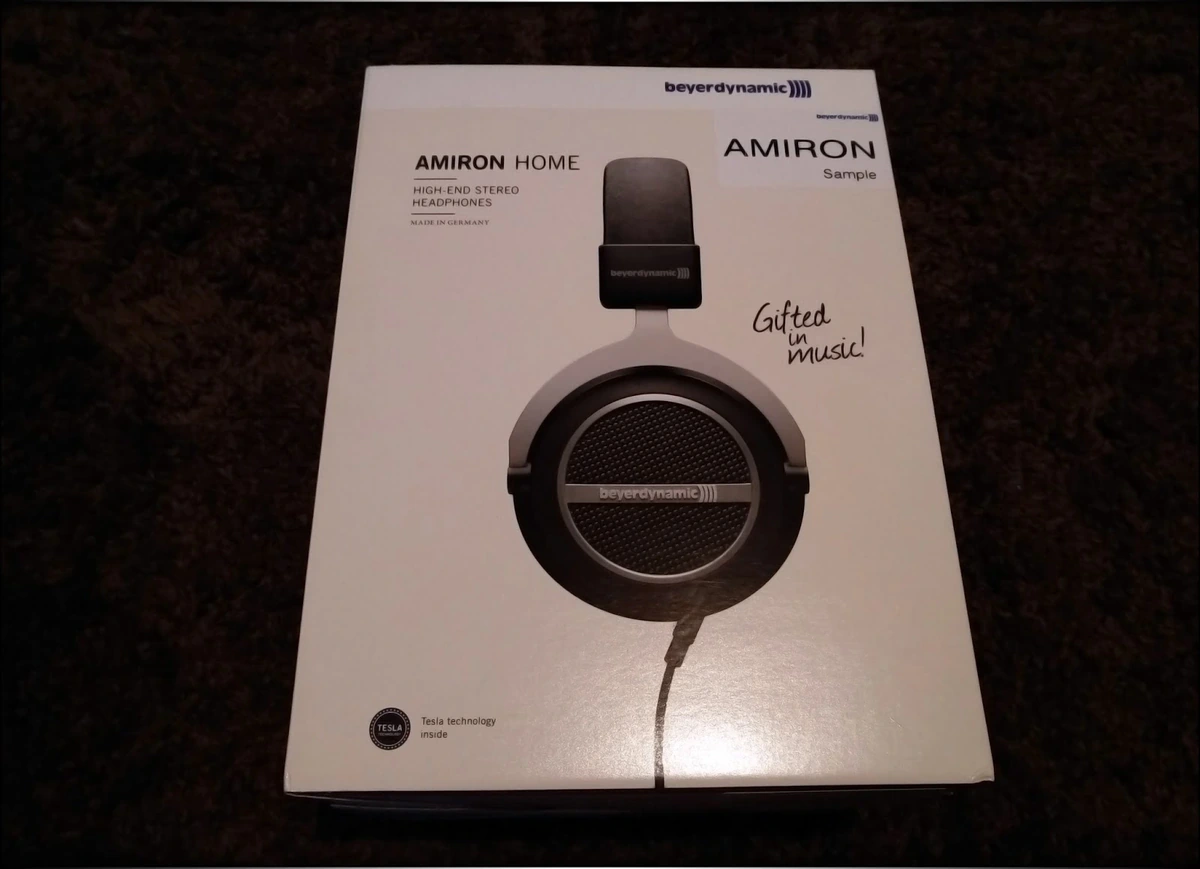
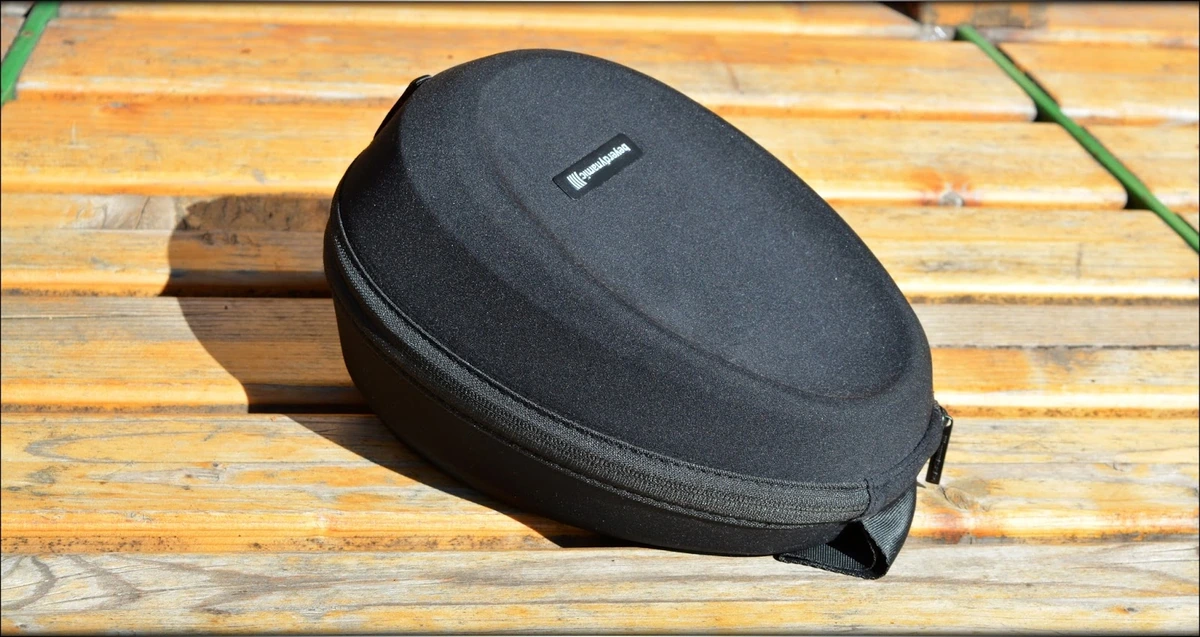
Amiron comes with what we’d name a simple, yet very effective package. The larger cardboard box is sturdy enough to keep the smaller carry box intact, and it has a rather interesting outer appearance, presenting the music lover with details about Amiron. Everything feels rather high-end, and there is a fair sense of luxury in Amiron, but there isn’t much else in the main package besides the carrying box.

The carrying box is nice and elegant, it has a nice soft feeling to it, and after taking Amiron on quite a few trips with us, we feel that it is sturdy enough to make a good headphone carrying companion. For a few bonus points, the carrying box has enough space even for Audeze LCD-MX4, and regardless of which headphones you take in it, you will always have enough space for a Player (DAP) as well inside.
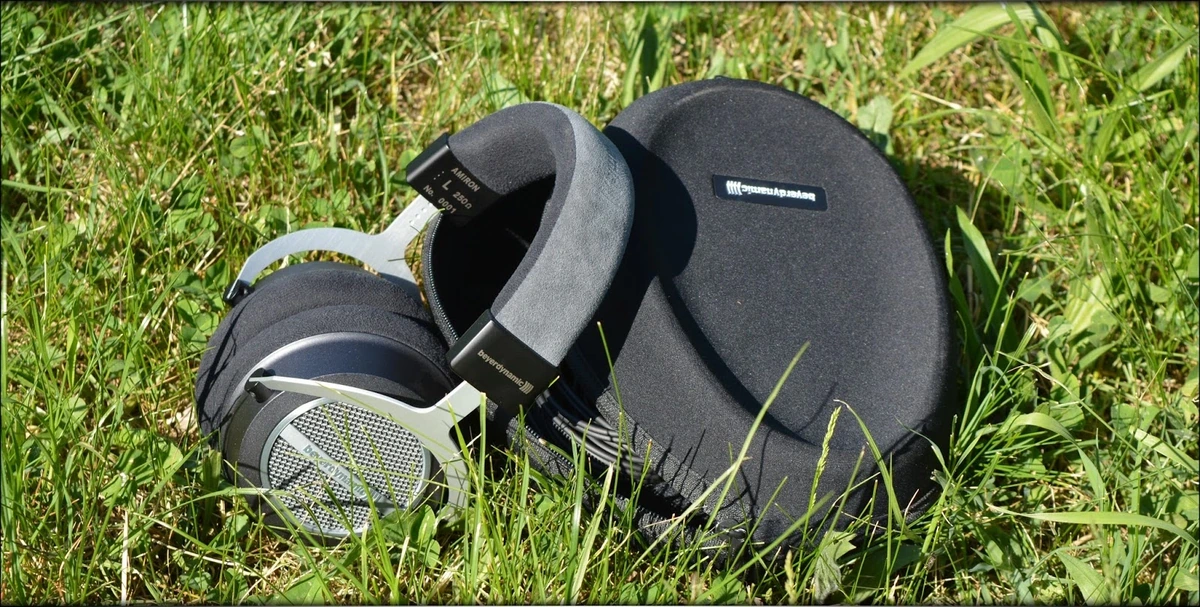
The other accessories that come in the package are the headphones themselves, Amiron, a 3.5mm to 6.3mm adapter, and a rather long yet very sturdy looking cable.
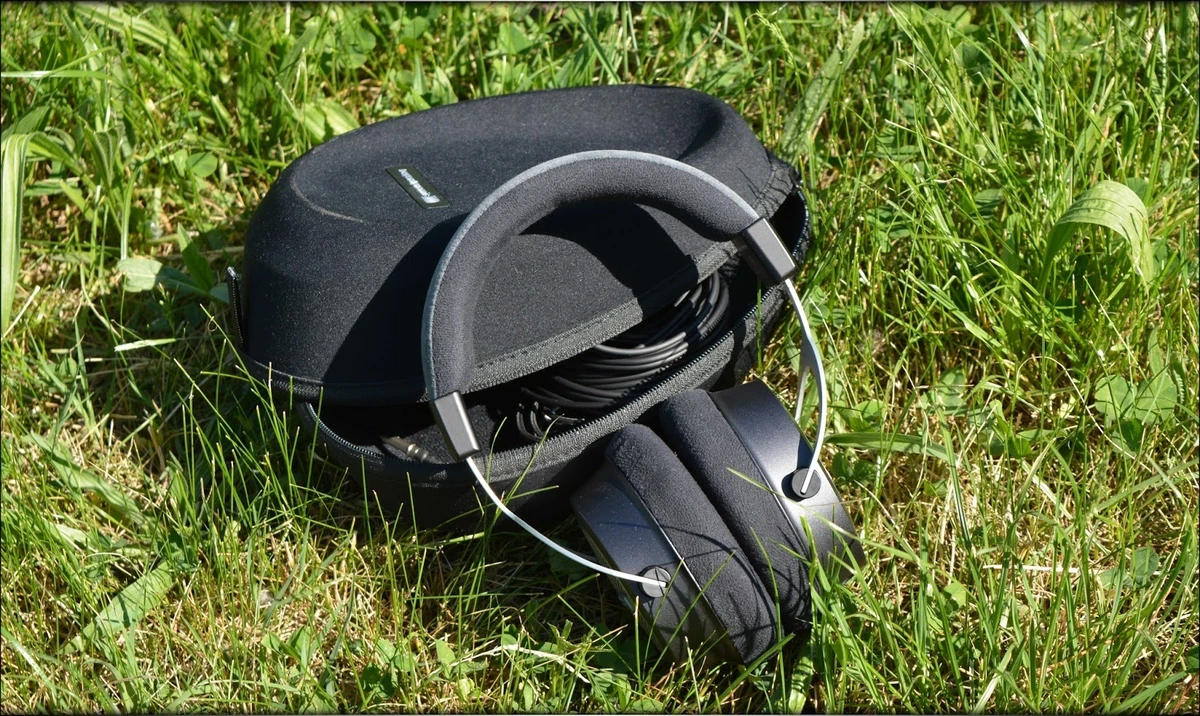
There are some things that might have came in handy, like an extra pair of pads, or a secondary, shorter cable, but we need to be honest, we are talking about a pair of desktop headphones here. A shorter cable might still have came in handy, but it isn’t quite as essential as it is for a small and portable headphone.
When it comes to a pair of extra pads, somehow the pads kept up with our usage patterns and with us sharing them for testing with more than twenty friends, so the pads that are already there are very good.
Technical Specifications
OPERATING PRINCIPLE – Open
TRANSMISSION TYPE – Wired
REMOTE – Without Remote
NOMINAL IMPEDANCE HEADPHONES – 250 ohms
HEADPHONE FREQUENCY RESPONSE – 5-40,000 Hz
NOMINAL SOUND PRESSURE LEVEL – 102 dB (1 mW / 500 Hz)
SOUND COUPLING TO THE EAR – Circumaural (around the ear)
Build Quality/Aesthetics/Fit/Comfort
When it comes to their build quality, Amiron is a pretty well built headphone. Rather, it is very very well built, with metallic insertions in the cup and the headband for better resistance, but plastic where this wasn’t necessary, to keep their weight down, for better relaxation in prolonged listening sessions.
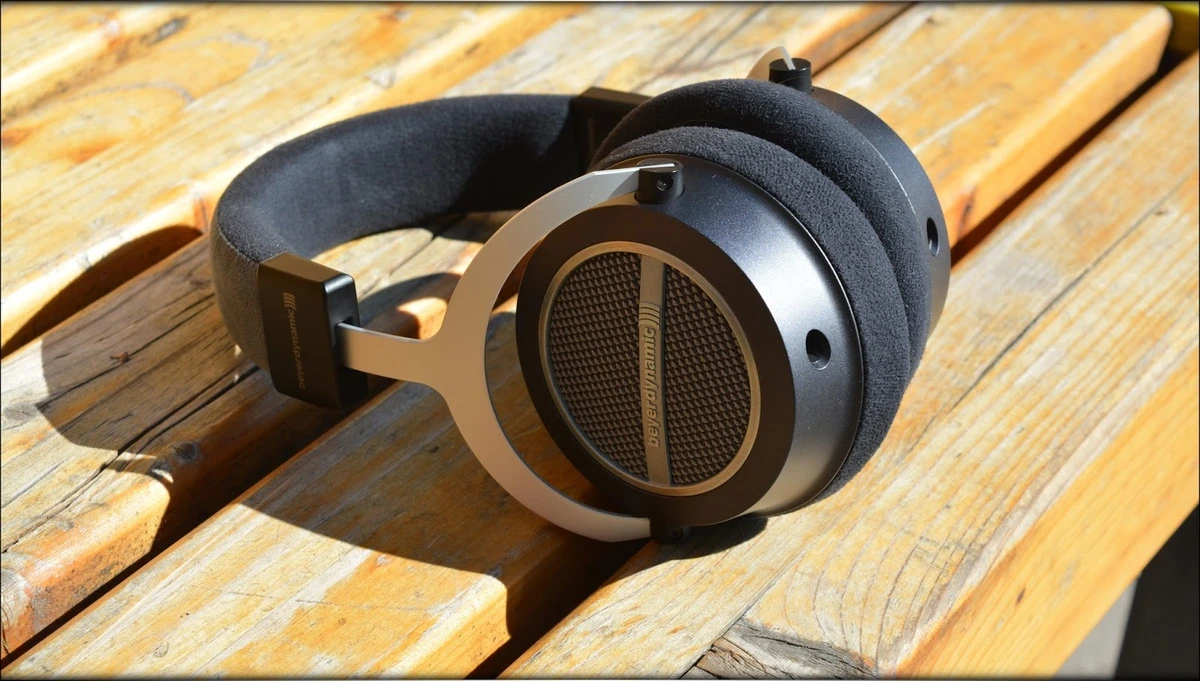



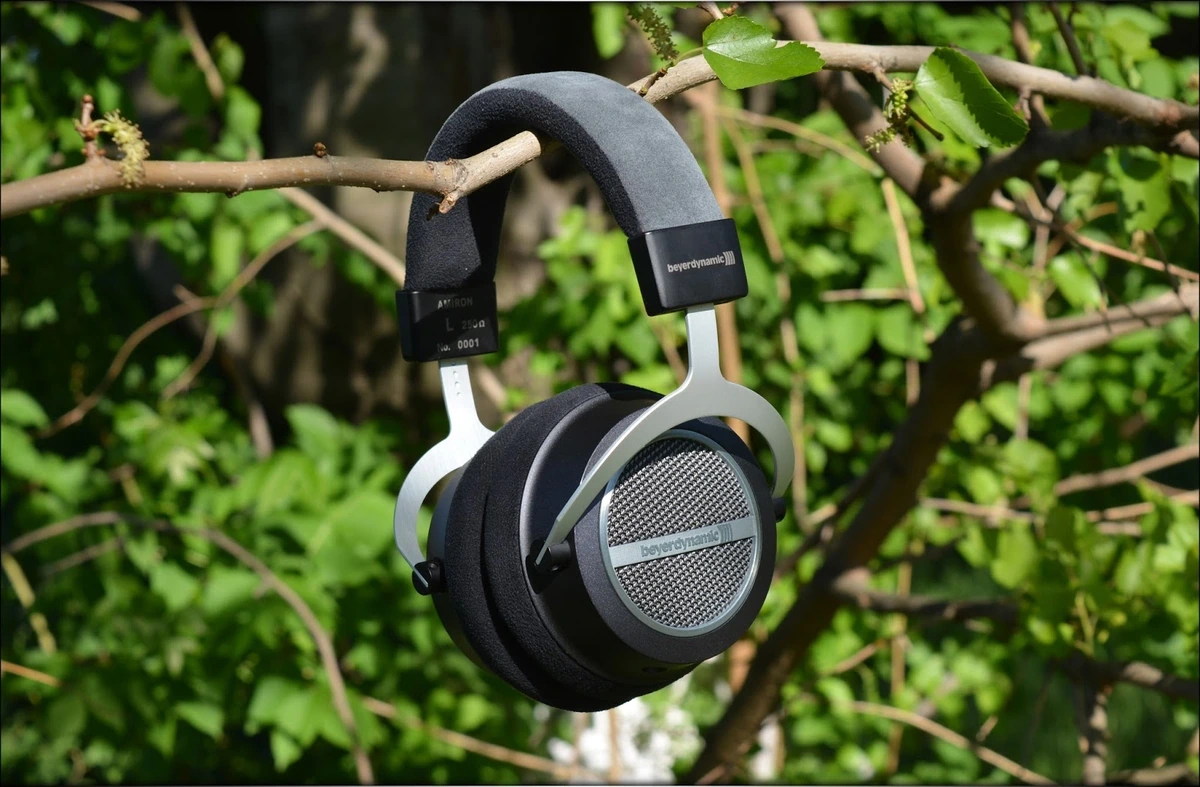
Let’s start with the bass, which is one of the highest quality bass we heard in a full open-back headphone to date. First, it goes down, and it reaches the lowest octaves with ease. Next, it really is tight and well-detailed, but doesn’t stray a lot off from what we’d call neutral. You should note that those are not basshead headphones, and that while they work with EDM and bass heavy music types, they are not bass heavy. This being said, the thing we love the most about Amiron is that they really show a lot of nuance in bass, the natural tone and vibration of a bass guitar requires a really good and revealing driver to play them well, and Amiron manages to do just that. For the record, we thought that engaging the Bass Slider on a FiiO Q5 with its AM05 made the bass more fun, all while staying clear and crispy, so they can also take in some EQ for those looking for more bass, provided you have enough power. The impact of the bass isn’t quite as high as the impact of the midrange, but the detailing and the finer quality of it is quite impressive.
The midrange is extremely clear, sounds open, natural, well separated, leaner, softer and very very musical. To make things clear, Amiron presents music with a healthy amount of textures, but they don’t make those sharp or grainy, instead going for a texture that feels smoother and natural, playful and slightly laid back. The mid-bass really isn’t quite that emphasized, but if you are looking for something delicate, musical, relaxing and extremely clear, Amiron surely can deliver well on those terms.
The treble is quite interesting. After reviewing Beyerdynamic Xelento, we weren’t quite sure what to expect from the treble, as Xelento is quite the smooth and the musica IEMl with an extremely smooth and relaxing top end, but Amiron surely doesn’t quite follow suit. The treble of Amiron instead, has an amazing amount of air and presents music with an amazing sense of space and openness. It is clear that Amiron will show sibilance and harshness if it was in the recording, but it doesn’t quite make that big of a deal out of it. Instead, Amiron does its best to hide any kind of sibilance and harshness, but doesn’t do away with it entirely.
To recap on the overall signature, the bass is on the lower amount levels, both the sub-bass and the mid-bass, the midrange has a very natural tone and very clear presentation, yet slightly laid back and on the softer side, while the treble is revealing and has its highest point around the 9-11 kHz area, where it doesn’t come off as metallic or uncomfortable, but more as airy and open-sounding. Truly an impressive work from Beyerdynamic with their Amiron Home.
Soundstage
As we presented it earlier, the soundstage of Amiron is very impressive, open and very well-separated, with a very good amount of depth and width. We’d say that it places the listener close to the most forward point of music, but places everything else around the listener, in such a way, that metal music has an excellent engaging feeling to it, while classical retains the feeling of the avenue it’s been played in. Curiously, we never felt that the soundstage was too large (dispersed) nor too closed (intimate), we rather felt that the soundstage worked well and that it reflected the amount of soundstage that was originally in the recording.
ADSR / PRaT
The ADSR and PRaT (Texturization) of Amiron Home is rather interesting to analyse. Those are not that emphasized on the PRaT and ADSR (Texturization), instead being slightly soft. This means that you will hear the textures in music like that of Mindless Self Indulgence, but things like trumpets will not sound aggressive or abrasive, instead being on the slightly softer and more musical side of things.
Portable Usage
This is an interesting point of Beyerdynamic Amiron, as they really aren’t made for portable usage. Not only they aren’t made for this kind of usage, they make portable usage complicated, as you have to take care of them and their soft velour material in the headband and on the earpads, you need to take care of the cable, and you need to have a beefy portable to give them enough power to sound good.

Let’s start with the materials. The materials of Beyerdynamic Amiron Home are soft and really made to be used indoors. This doesn’t mean that they don’t stay as comfortable while outdoors, but the headphones are comfortable and not very tight on the head, instead being more of an absolutely comfortable headphone, so walking or doing more energetic activities while wearing them might result in unpleasant results.
The cable they come with is very long and thick, and it is not made for outdoors usage, so for our outdoors tests we used the cable from Meze 99 Classics which we reviewed in the past. Both older and newer Meze cables work as well, and while Meze also has some higher grade cables that might work on Beyerdynamic Amiron Home, we haven’t had a chance to test those at the moment of publishing this review as Meze didn’t have stock on them. At any rate, if you really want to go portable, the cheapest cable that is of a higher quality and which we can guarantee will work is the Meze 99 Short cable, which is not quite that expensive for a reliable headphone cable.
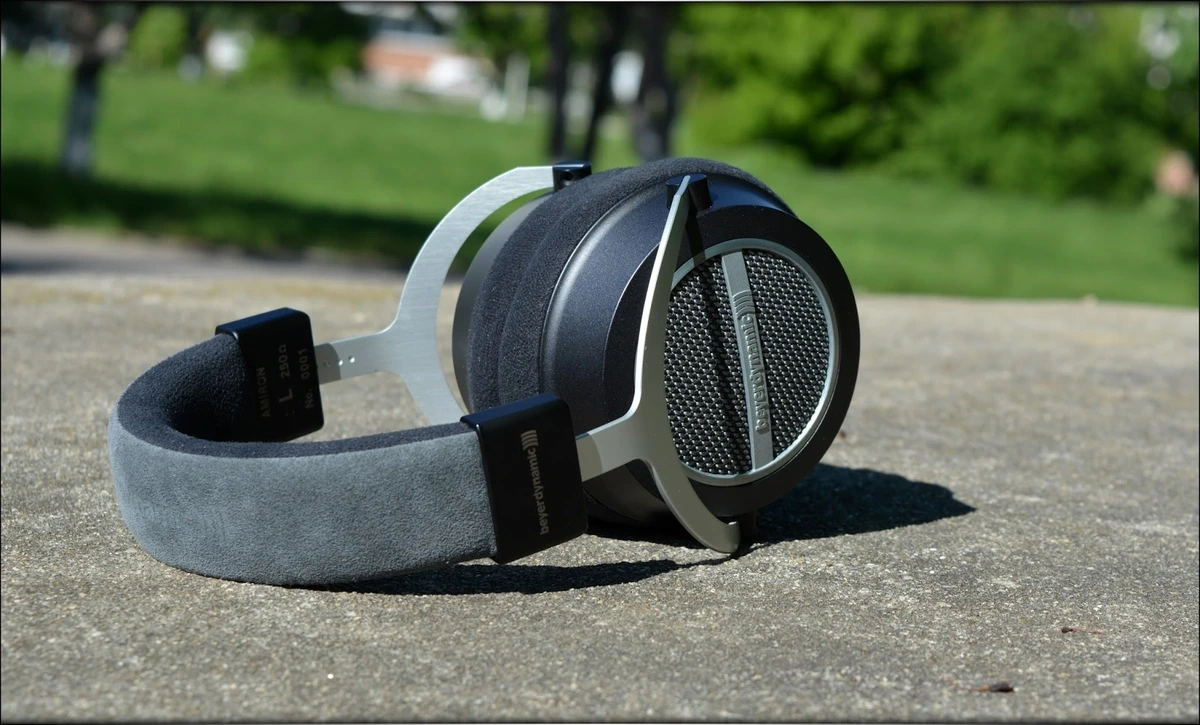
Now, the power… In a few words, Amiron loves some power. We generally don’t criticize sources for not having enough power, but with Amiron Home, you need at least a FiiO Q5 + AM05, FiiO X7mkii + AM05, iBasso DX200 / DX150 + AMP 5, or an iFi iDSD Micro Black Label. Nothing weaker won’t really work with Amiron, and portables that are less expensive, but have high power like Opus #1s won’t have enough power for Beyerdynamic Amiron, leading to a sound that is simply not loud enough for our typical listening scenarios.
Well, we missed talking about the most obvious thing when using Amiron outside, the fact that they are fully open-back. This is absolutely true, and if you feel like using a fully open back headphone while outside, those are great, but things like the rustling of the leaves, or street noise will be audible, especially in moments when the music is paused or has a very quiet passage. On the plus side, when we used them indoors, we noticed that we could listen to moderate levels without disturbing those around us, and without hearing too much noise from the outside. Somehow, indoors they really work well at moderate levels even for an open-back headphone.
All in all, Beyerdynamic Amiron Home is a home headphone that isn’t quite that portable, but instead is one of the best home headphones we tested to date in terms of comfort and ergonomics while used indoors.
Comparisons
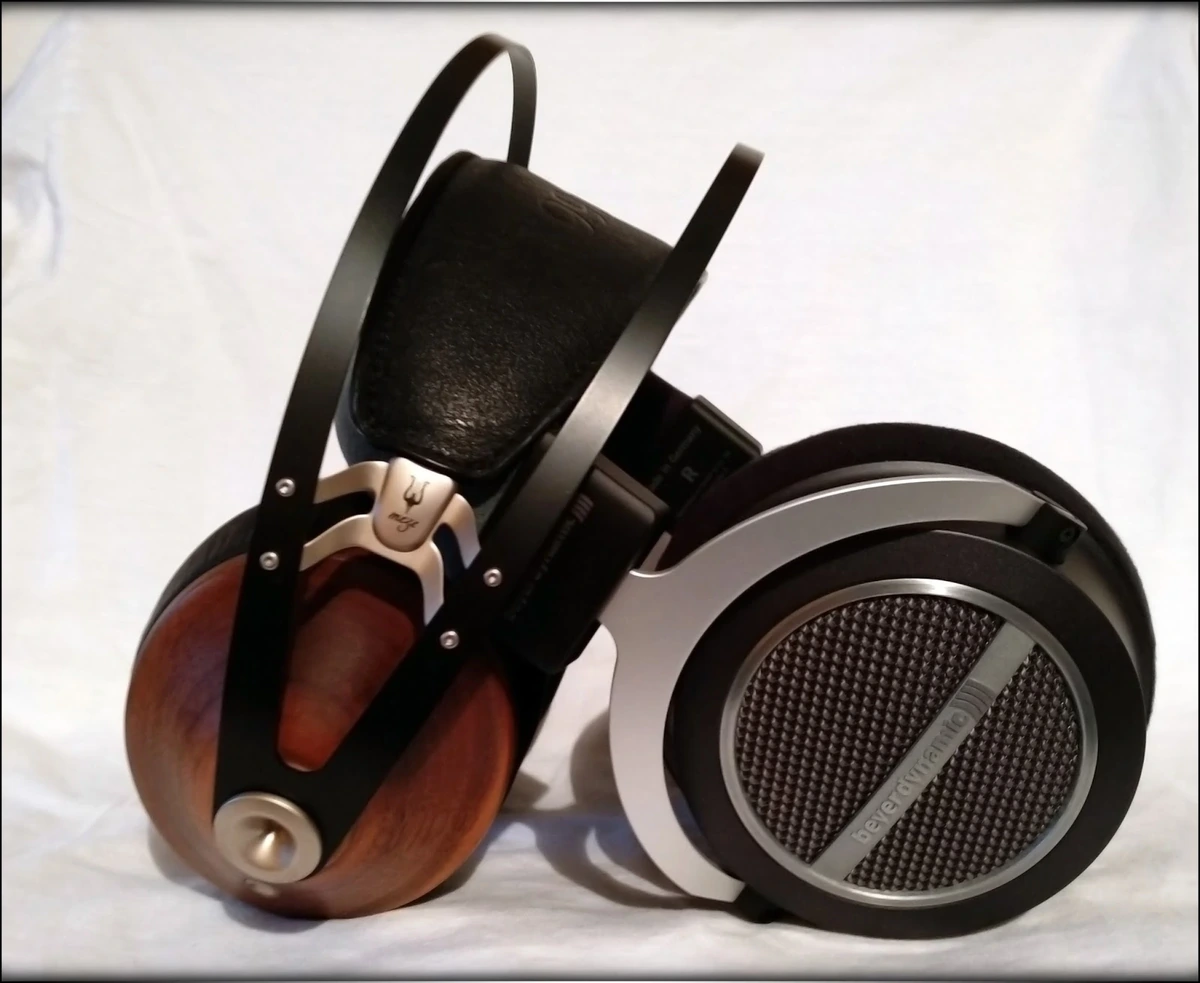
Beyerdynamic Amiron Home vs Beyerdynamic Xelento – This comparison doesn’t quite make that much sense from most points of view, but since both products are made by Beyerdynamic, we wanted to showcase how versatile Beyerdynamic’s offering can be and how they have headphones and IEMs ranging from very smooth to open and natural. Starting with the bottom end, where Amiron is ever so slightly enhanced over neutral, Xelento is quite enhanced and has one of the strongest bass we’ve seen in an in-ear. The midrange is quite different as well, and while both are very detailed and clear, Xelento is much thicker and delivers a music with excellent body, where Amiron delivers excellent detail and nuance in its midrange. The treble couldn’t be quite more different, with Amiron being airy, energetic, open and slightly soft, where Xelento has a very smooth and relaxing treble that couldn’t be aggressive even with grindcore or death metal.
Beyerdynamic Amiron Home vs Audeze LCD-MX4 – We actually received a ton of requests to do this comparison and for a fair reason, as both are quite interesting headphones, but we’d like to note that they are not at the same price point. Where Amiron can be found well below 1000 USD, LCD-MX4 is more around 3000 USD. When it comes to their sonic abilities, LCD-MX4 feels like an improvement all-over the range, with more precision, even more detail, and clearer overall sonics, more bass impact and it is slightly more forward in the midrange. Beyerdynamic Amiron feels more relaxing though, with a softer overall sound. Amiron wins a little in terms of comfort, as they are lighter, but we have used LCD-MX4 while out and about without an issue. The drive-ability is on LCD-MX4’s side, as it can be driven with less power than Amiron Home, but this isn’t quite that relevant for Amiron Home as it is a home Headphone, where you can have large and inexpensive amplifiers with a lot of power that sound amazing, like the mighty Burson Play or iFi iDSD Micro Black Label. At the end of the day, the difference in price is there in the advantage of LCD-MX4, but then again, we would really recommend testing both as the price difference is high enough that we feel some might not be able to justify the increase in price as easily as others. Amiron is also softer so easier to listen to, especially when the record is less-than-ideal, and with our passion for harsh music, we know that some great albums just weren’t made with the conscious music lover in mind and they may have a hard edge that Amiron can help ease.
Beyerdynamic Amiron Home vs Ultrasone Signature DXP – Here’s a more interesting, and maybe more fair comparison, with both headphones being closer in price points, although they are clearly directed at different audiences. Ultrasone Signature DXP is much more enthusiastic in its bass levels, providing a more visceral impact, and tactile feeling, to the point where we consider it to be a mighty worthy basshead headphone, where Amiron Home really isn’t made for this kind of statement, being a rather relaxing and easy-going headphone with a bass ever so slightly increased over the neutral. Both produce good nuance in bass, but Amiron might have the upper hand in defining very fine nuances due to the less amount of overall bass. The midrange is similar between the two, but Amiron feels airier and more extended, where Signature DXP feels more textured and has a more impactful overall sound with a more revealing ADSR/PRaT, which also leads to a “harder” texture, where Amiron is softer and more gentle when it comes to textures. The treble is actually stunningly similar, with Signature DXP being really well extended and offering an amazing amount of air and soundstage for a closed back headphone, although Amiron Home holds the upper hand in raw treble detail. When it comes to the drive-ability, Signature DXP is easily driven from a smartphone, while Amiron home needs a proper power source to be driven. The comfort is much much better on Amiron Home, with larger earpads, softer ear pads, softer overall headband, softer overall headphones, less clamping and much larger earpads in both size and depth. Signature DXP feels slightly on-ear compared to Amiron Home, but for the listener that is on-the-go, this might be for the better because Signature DXP is actually very portable and provides an excellent headphone to take with you while on a trip, where Amiron Home is going to see most of its usage indoors, while leaning back and enjoying the music. Each seems to appeal to a very different group of music lovers, and we can easily recommend DXP to bass addicts and people who want an amazing signature while on-the-go, while we’d recommend Amiron more to those who want a great and comfortable home headphone that appeals to those who like to analyse every fine nuance in music, and who don’t require the absolutely highest amounts of bass, but take delight in the finer nuances in the bass for their music experience.
Beyerdynamic Amiron vs Ultrasone Signature Studio – Here things get interesting, because Ultrasone Signature Studio is actually quite similar even in tuning with Amiron. Signature Studio offered a better overall comfort for us, when compared to Signature DXP, and although they seem to have the exact same body and shape and size, somehow back when we tested Signature Studio we couldn’t feel any disadvantage for their fit and comfort. It may be that we grew accustomed to Amiron and LCD-MX4 (also incredibly comfortable), and thus we increased our standards for what is comfortable. Most people testing Ultrasone Studio and DXP tell us that they feel very comfortable with them, so we feel that we might be rather not entirely fair to DXP and Studio from Ultrasone when it comes to their comfort. The sound though, is very amazing on both Ultrasone Studio and Amiron Home, to the point where Amiron Home feels more like a softer and listening-centered headphone, where Signature Studio is a more studio and production-centered headphone, with more revealing transient response. When it comes to their soundstage, we’d like to note that Ultrasone is actually the only closed-back headphone company that can stand its ground against something like the openness of Amiron Home, most other closed back headphones feeling more intimate in general when compared to a fully open-back headphone from Beyerdynamic. The sub-bass of Signature Studio is slightly more elevated when compared to that of Beyerdynamic Amiron, and the upper midrange is slightly more emphasized, but generally, they can be counted as similar, with Ultrasone Signature Studio feeling like a more Studio and less relaxing take on this very same signature. For the comfortable listening of your home’s embrace, Amiron Home is the more recommended choice, while if you need the more precise studio headphone with a closed-back design for portability and for utmost precision, Signature Studio may be more fit to your needs.
Beyerdynamic Amiron Home vs Sennheiser HD600 – This makes an interesting comparison because the two are quite similar in the overall signature and design. Both are open-back headphones designed for home and desktop usage, both offer a very good bang for the buck, and both are rather interesting headphones. The baseline signature is similar, the bass is a little up from neutral, but not much, the midrange is clear and natural, while the treble is enhanced and airy. Now, when it comes to the differences, the first thing that comes to mind is the comfort, where Beyerdynamic Amiron is much more comfortable than HD600, thing which is ironic since our kind of comfort is the Sennheiser HD800 series. We know that Sennheiser HD700 is also pretty comfy, but HD600 is not as comfortable as Beyerdynamic Amiron for sure. The sound is softer and more musical on Beyerdynamic Amiron, with more emphasis on how fun they are to listen to, it feels like it has better extension both ways, and the treble is slightly different, with the treble highest point being around 9-11 kHz, making them more airy and better separated, with more engagement in the long run. This doesn’t make HD600 a less outstanding headphone, and some might point that HD600 is actually cheaper those days, but in Romania the two are not that far off in price, so we consider it a fair comparison as if they were equals. Please remember how impressed everyone is with HD600, even us, Amiron Home just makes things even better for the home and desktop listener who wants a truly relaxing listen. On this note, the transient response of HD600 might be a tad more revealing of textures, but the softer sound of Amiron Home is quite addicting as both feel as if they are trying to do the same thing.
Recommended Pairings
This might be a tricky one, but please keep in mind that Beyerdynamic Amiron is a home headphone, and it needs a lot of power to get loud enough to be enjoyable, so this time we’re not going to recommend that many DAPs (Digital Audio Players), and rely more on desktop AMPs instead.
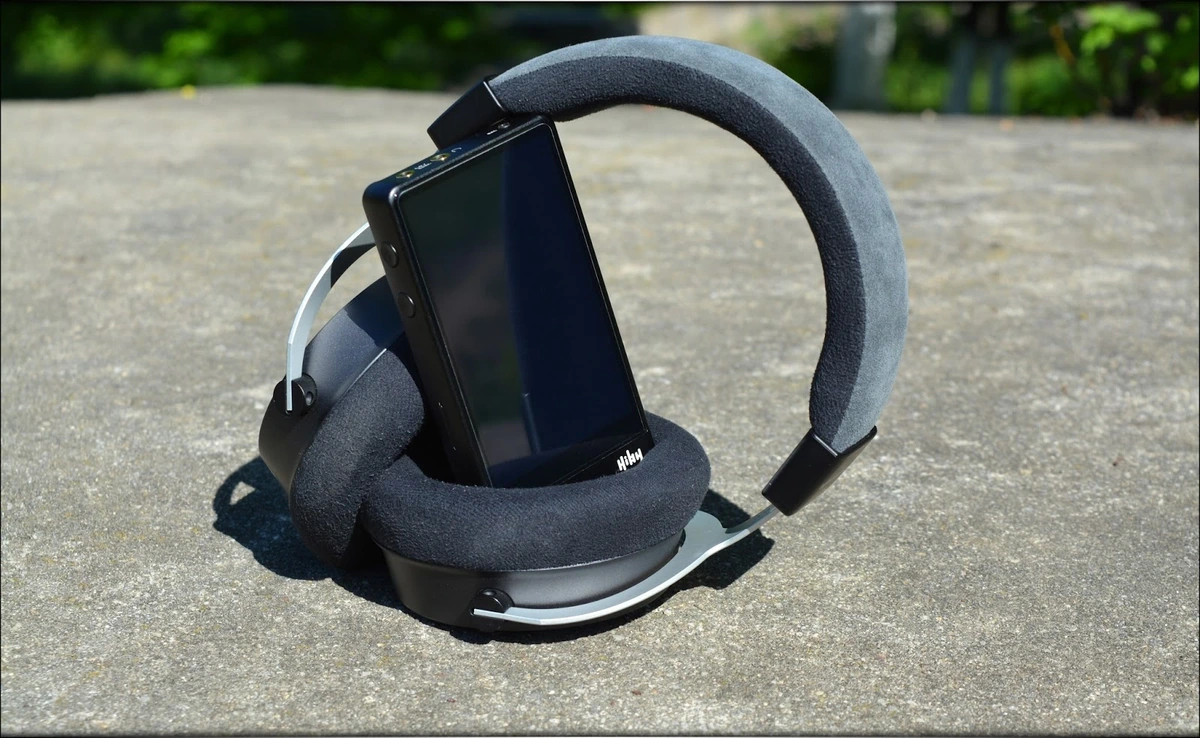
Beyerdynamic Amiron + iBasso DX200 (AMP5) – Now this combination is interesting, not only because of its power, but also because of its control. DX200 + AMP5 is able to control Amiron really well and this leads to a very nice, detailed and rounded sound that bears the most finest nuances there are. The whole combo feels as if one could take the beauty of Amiron anywhere with them, and this is an amazing feature for both companies, as having this much beauty on the go is something most wouldn’t have dreamed about just a few years ago.
Beyerdynamic Amiron + X7mkii/FiiO Q5 (AMP5) – FiiO X7mkii and FiiO Q5 both sound the same with using AM05 from FiiO, so we’ll bundle them together. This is yet another example that works really well together. FiiO X7mkii has more than enough power for Amiron with its AM05, and they really manage to make this headphone sing in every thinkable way. The control is excellent, the depth and width of the soundstage is most impressive, and there is an excellent sense of nuance for every musical note. The bass slider on FiiO Q5 is also something we really liked and used in combination with Amiron.
Beyerdynamic Amiron + iFi iDSD Micro BL – This is interesting, because iFi iDSD Black Label Micro has more than enough power for Beyerdynamic Amiron. The sound is quite excellent and on an overall level, if you don’t plan on leaving your home, this is probably one of the most interesting DAC/AMPs you can look at for Beyerdynamic Amiron. We won’t insist on saying that iFi iDSD Micro BL is portable by any means, but it is transportable between rooms, and it really is a nice desktop DAC/AMP for its price, with a deep, well defined, and very well-layered sound. Its slightly thicker bass also works well with Amiron, and its X-Bass feature really puts some more bass in Amiron, for those looking for it.
Value and Conclusion
We need to get straight to the point here. Beyerdynamic Amiron Home is not exactly a cheap headphone, and it won’t be exactly cheap to drive either. At 600 EUR price point, Amiron sits comfortably in the upper midrange to the high end area of headphones. We feel that this is for a good reason, and for getting a significant improvement, you need to pay a little more, but when picking a headphone in this price area, its source also comes into play.
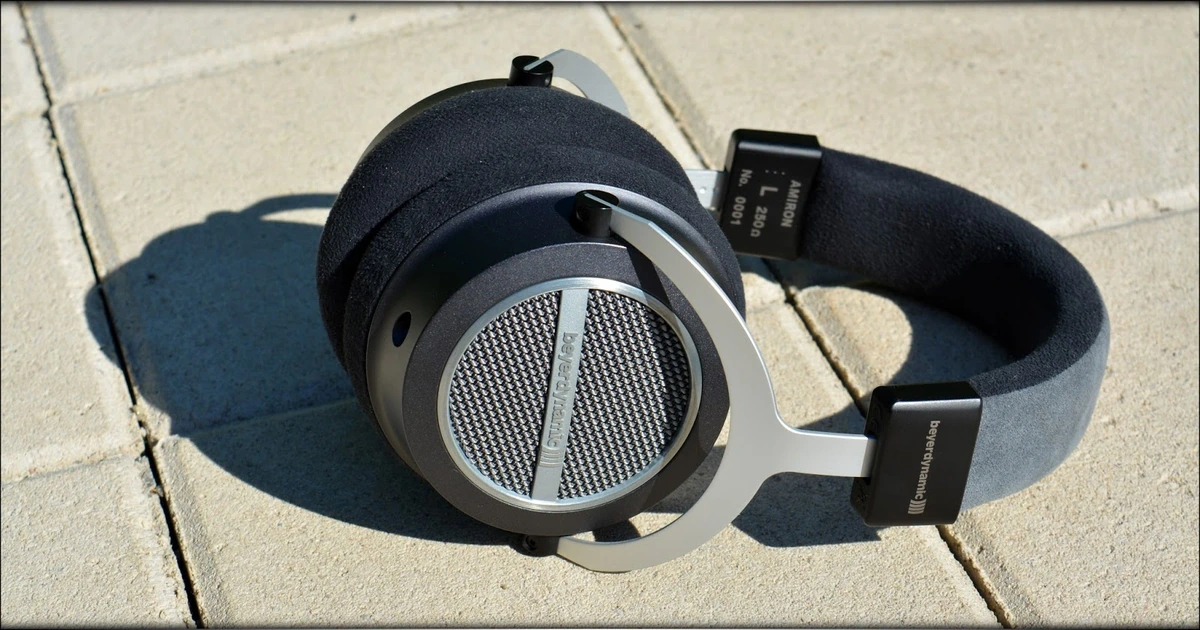
Beyerdynamic Amiron requires some power to get loud, and while some portables might be able to do it, we feel that there are many desktop source components which are up to the task, some of them being even inexpensive, so while something like iFi iDSD Black Label Micro does an amazing job and has a ton of features, something like FiiO K5 might also work fairly well and drive Amiron with ease to loud enough levels for it to be quite enjoyable.
On the comfort, Beyerdynamic Amiron is exactly what it promises to be, one of the most comfortable home headphones there are. With a very fine and velvety velour on its pads and headband, with a soft cushion on all sides, and with a really deep and large ear pad, Beyerdynamic Amiron is exactly what we’d call unbelievably comfortable, they simply sit on one’s head and disappear from there, being open back you also can hear noise that is coming from the outside, resulting in one headphone that really feels like listening to a concert in open air.
On the other hand, they are not quite that portable, and we feel that they were clearly made to be used indoors, providing excellent overall levels of comfort and a soft, musical and pleasurable sound, but coming with a rather long cable and being harder to drive.
So, if they are not good at being taken outside, then what are they good at?
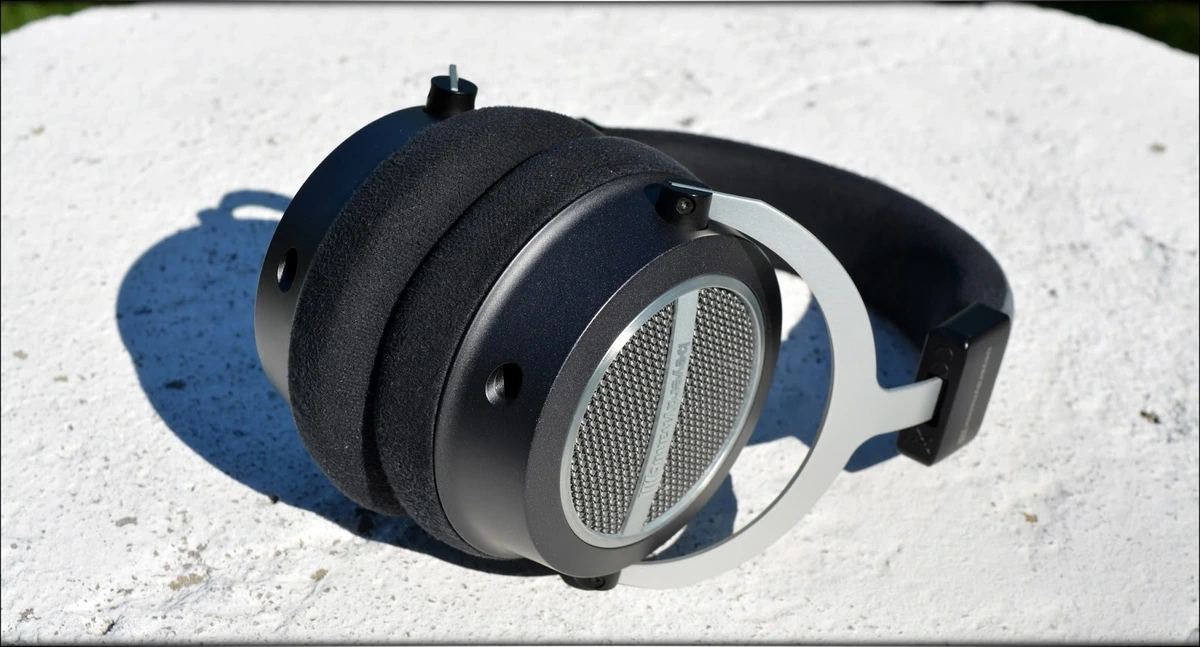
We feel that they are best at producing an enjoyable, easy-listening experience. They shower you in details, but they don’t stuff those in your face. They show you each intricate component of a song, but they don’t do it forcefully, instead, they take you on a walk and let you experience the beauty in the comfort of your home. The close-to-neutral bass is exemplary at showing nuance and at being quick and tight, while the midrange, while slightly soft, is excellent at making music sing. The treble is actually pretty sparkly, but still keeps a bit of softness, making things natural and revealing, airy and sounding well-layered. In all fairness, this is a type of music that one can enjoy for ages. It doesn’t subdue detail, but it doesn’t make it too forward either, keeping just the right amounts of everything to be interesting, engaging and to be a truly comfortable home audiophile experience.
Product Link
You can get Beyerdynamic Amiron from www.amazon.com here: https://www.amazon.com/beyerdynamic-Amiron-Wireless-High-End-Headphone/dp/B079P4348N/
--- Please remember to stay safe, and always have fun while listening to music!---
- If you have a dime to spare, please donate, and help us! It would make the day brighter for me and my wife-
Full Playlist used for this review
We listened to more songs than those named in this playlist, but those are excellent for identifying a sonic signature. I recommend trying most of the songs from this playlist, especially if you’re searching for new music! The playlists are different for Spotify, Tidal and Youtube, and based on the songs I enjoy and are available on each!
https://www.youtube.com/playlist?list=PL_cjBXGmwSHSdGcwuc_bKbBDGHL4QvYBu
https://open.spotify.com/playlist/5J3oloz8Riy9LxEGenOjQ0?si=979ba4f082414be7
https://tidal.com/browse/playlist/330fd544-8e5b-4839-bd35-676b2edbb3d5
--- Contact Us ---






Awesome! I know this is an older review, and an older product, but I love it
Thanks a lot for your hard work, George